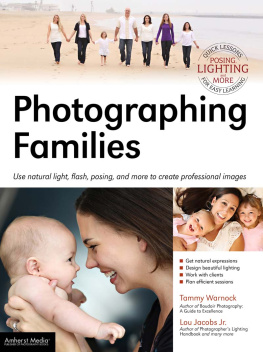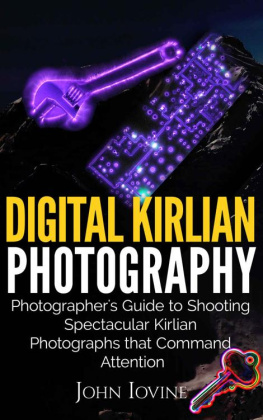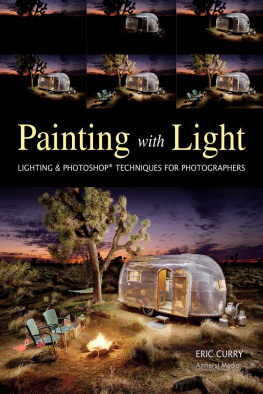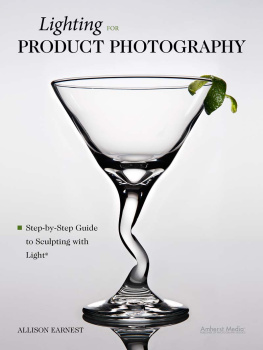
To Stephen, for being the light and love at the end of the tunnel.
Copyright 2016 by Heather Hummel
All rights reserved.
All photographs by the author unless otherwise noted.
Front cover: Top photo by Heather Hummel. Bottom photo by Doug Bailey
Published by:
Amherst Media, Inc., P.O. Box 586, Buffalo, N.Y. 14226, Fax: 716-874-4508
www.AmherstMedia.com
Publisher: Craig Alesse
Senior Editor/Production Manager: Michelle Perkins
Editors: Barbara A. Lynch-Johnt, Harvey Goldstein, Beth Alesse
Associate Publisher: Kate Neaverth
Editorial Assistance from: Carey A. Miller, Sally Jarzab, John S. Loder
Business Manager: Adam Richards
Warehouse and Fulfillment Manager: Roger Singo
ISBN-13: 978-1-68203-046-2
Library of Congress Control Number: 2015953693
10 9 8 7 6 5 4 3 2 1
No part of this publication may be reproduced, stored, or transmitted in any form or by any means, electronic, mechanical, photocopied, recorded or otherwise, without prior written consent from the publisher.
Notice of Disclaimer: The information contained in this book is based on the authors experience and opinions. The author and publisher will not be held liable for the use or misuse of the information in this book.

www.facebook.com/AmherstMediaInc
www.youtube.com/c/AmherstMedia
www.twitter.com/AmherstMedia
Table of Contents
Guide
Contents


PHOTOGRAPH BY DOUG BAILEY.





H eather Hummel Photography spreads pixel dust on landscapes and seascapes. Her photography has been exhibited at Agora Gallery (Chelsea District, New York City), Cville Coffee (Charlottesville, VA), and Valley View Hospital (Glenwood Springs, CO). Additionally, she licenses her photos through ImageBrief.
Heather has ghostwritten over a dozen books (and counting). Her clients include corporations, politicians, philanthropists, dating coaches, real estate agents, public figures, and business leaders. With experience in both traditional and independent publishing, Heathers diverse background and knowledge of the industry appeals to many authors seeking a qualified ghostwriter. Her clients books have been featured on TODAY as well as in Publishers Weekly, USA Today, and The Washington Post. A contributing author in Successful eBook Publishing: The Complete How-to Guide for Creating and Launching Your Amazon Kindle eBook by David Wogahn, Heather shares her wisdom in a chapter on ghostwriting.
By personal request from Arianna Huffington, Heather is a featured blogger in the Arts & Culture section of Huffington Post. Her article titled Why Agents Reject 96% of Author Submissions gained remarkable attention in the industry, including re-tweets from Publishers Weekly and many quality literary agents.

In todays world of social media and technology, I think its important for people to take time out to appreciate the land and seas that the new, green world is trying to save. Its one thing to recycle and do your daily bit for the environmentits another to get out and actually enjoy the elements were working so hard to preserve. Its my hope that my images inspire people to do this.
As a photographer, my interest in landscapes and seascapes has always been much stronger than any other source of inspiration. Im constantly in search of new scenes to spread pixel dust on. No matter the season or the setting, Mother Nature continues to inspire me to seek the next photo opportunity. Having driven cross-country eight times, Im fascinated by wide-open spaces and how light, or the lack of light, impacts the scene before me. Everywhere I go, I analyze light.
The key to photography is figuring out how light influences the outcome.
E verywhere I go, I analyze light. A source of light, and how it is used to the photographers advantage, can make the difference between a mediocre image and a stunning capture. Be it a twinkling star, a flickering candle, a dimmed street light, or the sun setting after a storm, light comes from many sources and in varying degrees of intensity. It is how these sources and degrees of intensity are manipulated by the camera that impacts the outcome of an image. Additionally, without some source of light, one would be hard pressed even to capture a photograph.

Image 11.Summer Sky. (Tech specs: f/7.1, ISO 200, 1/500 second)
One of the first concepts of light to understand is the difference between hard light and soft light. Soft light is created by sources that are large in relation to the subject; hard light is created by light sources that are small relative to the subject. This produces visible differences in the shadows. Soft light delivers very pale, diffused shadowsor even no shadows at all. Hard light is created by a focused light, so it casts pronounced, hard-edged shadows on the subject. Most photographers avoid using hard light. In controlled lighting situations (like a studio), they use diffusers or light boxes to produce a softer look on their subjects. For natural light photography, what we mostly deal with as landscape photographers, the hardness/softness of the light is something we use to our advantage by selecting the right time of day (or weather conditions) for our shoot.

Image 12.Jefferson Vineyard. (Tech specs: f/5, ISO 400, 1/100 second)
When we think about light, the sun is more often than not the first source that comes to mind. Because of this, most casual and amateur photographers count on the peak of sunlight to illuminate their subjects. Abundant light, such as with , generally occurs between the daytime hours of about 10:00AM and 4:00PM, depending on the season and location.




















